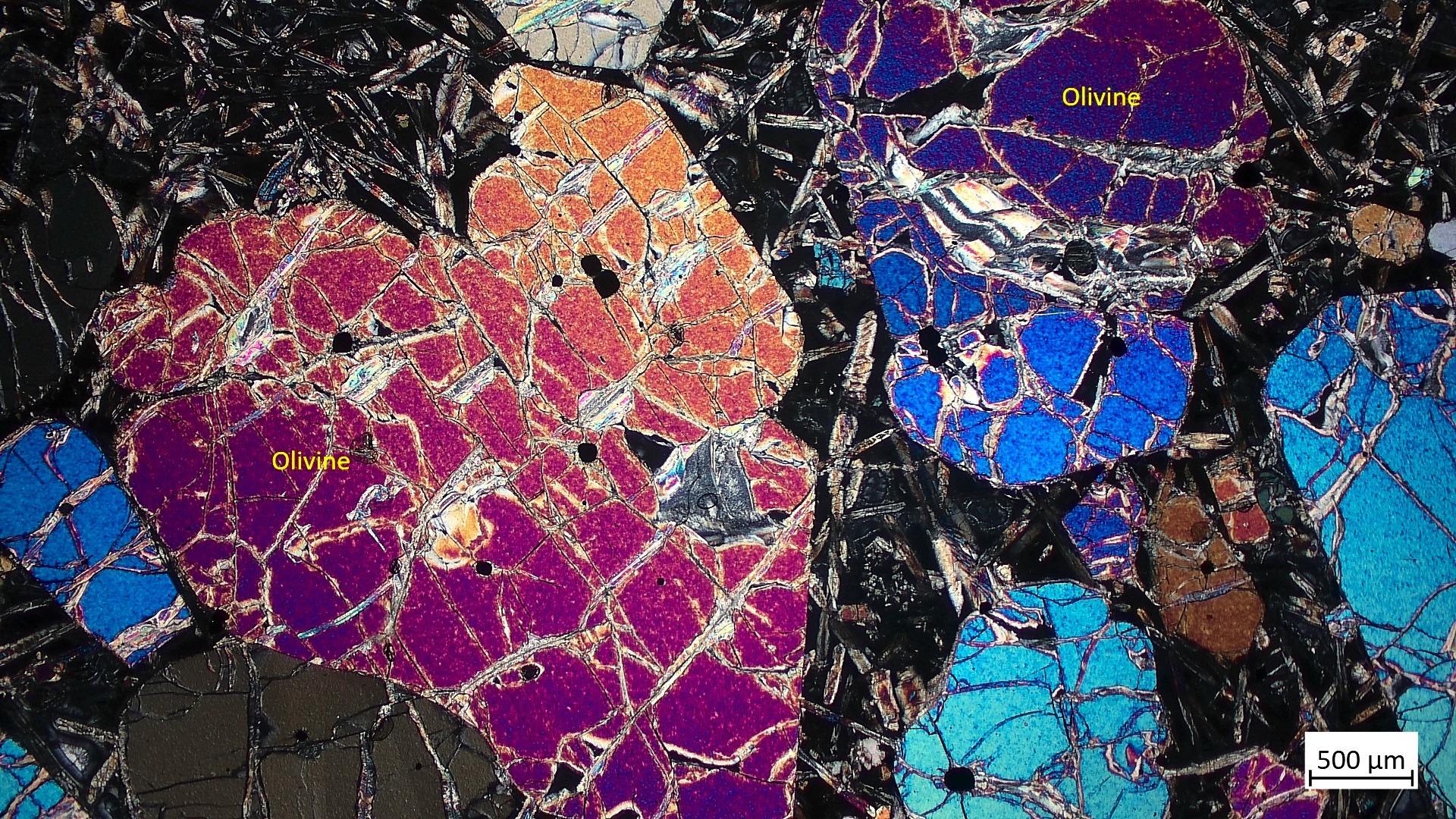Microscopy and imaging facility
Our microscopy laboratory is equipped with 6 microscopes with digital cameras connected to computers, in addition to a scanner, offering researchers a comprehensive suite of tools for visualising and analysing a wide range of samples.
Petrology compound microscopes

There are 2 petrological transmitted/reflected light polarising microscopes (Leica DM750P and Nikon Optiphot), which are fitted with Zeiss cameras and ZEN imaging software. These are used for studying standard petrological thin sections, polished thin sections and polished blocks.
Paleontological/biological compound microscopes
There are 2 compound microscopes suitable for palaeontological/biological research.
The Leica DMR microscope has both transmitted and reflected light, with lenses ranging from x1.25 - x100 (for oil immersion). This microscope is used for looking at standard microscope slide preparations with cover slips in transmitted light and polished blocks in reflected light. It also has polarisers (allowing nomarski (Differential Interference Contrast) microscopy). DIC is useful for studying microfossils, particularly palynomorphs, diatoms, coccoliths and pollen. This microscope is fitted with a Zeiss camera and ZEN imaging software.
The Leica DMLB microscope has transmitted light and lenses ranging from x2.5 - x100 (for oil immersion). This microscope is used for looking at standard microscope slide preparations with cover slips. It also has polarisers (allowing nomarski (Differential Interference Contrast) microscopy). This microscope is fitted with a Leica camera and LAS imaging software.
Stereomicroscopy

There are 2 Leica stereomicroscopes, a MZ12.5 and a higher specification MZ16. Both have a range of different magnification lenses. In reflected light there is a choice of twin fibre optic light sources or a ring light, both with optional polarisers. There are also transmitted light bases with optional polarisers and there is also a drawing tube.
The Leica MZ16 is fitted with a Zeiss camera and ZEN imaging software.
The Leica MZ12.5 is fitted with a Leica camera and LAS imaging software.
Imaging

There are many tools available in ZEN software that can help to capture and process images at a good resolution, such as:
- EDF (Extended Depth of Focus): The software creates a single image from individual images acquired at different Z positions of the stage, using manual focus. (This is particularly useful for stereomicroscopy).
- Best image: This enables you to acquire several images quickly, at different camera settings, of the same sample position. After the acquisition, you can select the image which suits you most.
- Panorama (interactive): This enables you to acquire a panorama image with a manual stage. If the total sample area to be acquired exceeds the area that can be acquired with a single acquisition, you can manually acquire multiple images (tiles) of neighbouring areas on the sample, which are then stitched into a panorama image.
- Interactive Measurements: This enables you to measure distances, angles, areas, and intensities of pixels in images. You can also save the measurement results as tables and images.
The Zeiss cameras are Wi-Fi enabled and can be used to capture images with a smartphone or tablet using the Labscope app.
The Epson Scanner can be used to take an image of a whole microscope slide (thin section), in both normal and polarised light.

For photography, the 6 computer systems are fitted with Leica LAS (Leica Application Suite) imaging software. There is a measurement option that allows measurements and text to be added to an image and also multi-focus software that allows the capture of a stack of images at different focus positions, which are then combined into a single extended depth of focus image (particularly useful for stereomicroscopy).



